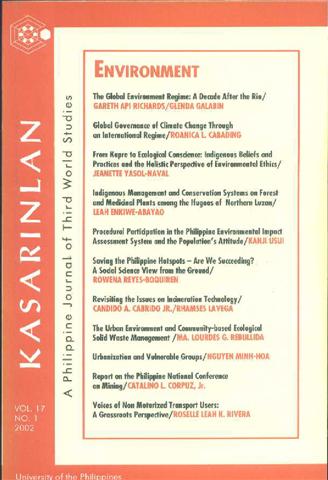Saving the Philippine Hotspots- Are we succeedoing? A Social Science view from the ground
Abstract
The state of biodiversity in the country requires immediate and coordinated response from local communities, the government, and the private sector. Biodiversity loss since the last decade continues today despite the increasing inflow of foreign-assisted investments in conservation initiatives. A number of these efforts provide lessons learned the hard way: the need for strategic partnerships among various stakeholders, no matter how serious their resource conflicts may be; for LGUs to take a stronger position in the control and management of their resource base in the light of Philippine society's political culture and poverty; for policy harmonization among government offices whose programs and administrative directives compete for scarce resource areas; for trans-disciplinal, holistic strategies and methodologies to be creatively thought out in order to address complex problems in resource use arrangements; for the primary local communities, including the cultural communities with their unique contribution to cultural and biological diversity, to be given rightful consideration in any conservation effort. These lessons are presented in greater detail in the paper to demonstrate that, indeed, there is hope in conserving Philippine biodiversity. The paper is a summary of the 18-month nationally-coordinated: Philippine Biodiversity Conservation Priority- Setting Program spearheaded by the Department of Environment and Natural Resources (DENR). The program brought together 300 individuals and institutions from both the public and private sector.
Published
2008-09-17
How to Cite
REYES-BOQUIREN, Rowena.
Saving the Philippine Hotspots- Are we succeedoing? A Social Science view from the ground.
Kasarinlan: Philippine Journal of Third World Studies, [S.l.], v. 17, n. 1, sep. 2008.
ISSN 2012-080X.
Available at: <https://journals.upd.edu.ph/index.php/kasarinlan/article/view/1063>. Date accessed: 23 aug. 2025.
Section
Research Reports
Keywords
Conservation Management; Environmental Impact Assessment; Environment
By submitting a manuscript, the authors agree that the exclusive rights to reproduce and distribute the article have been given to the Third World Studies Center.



